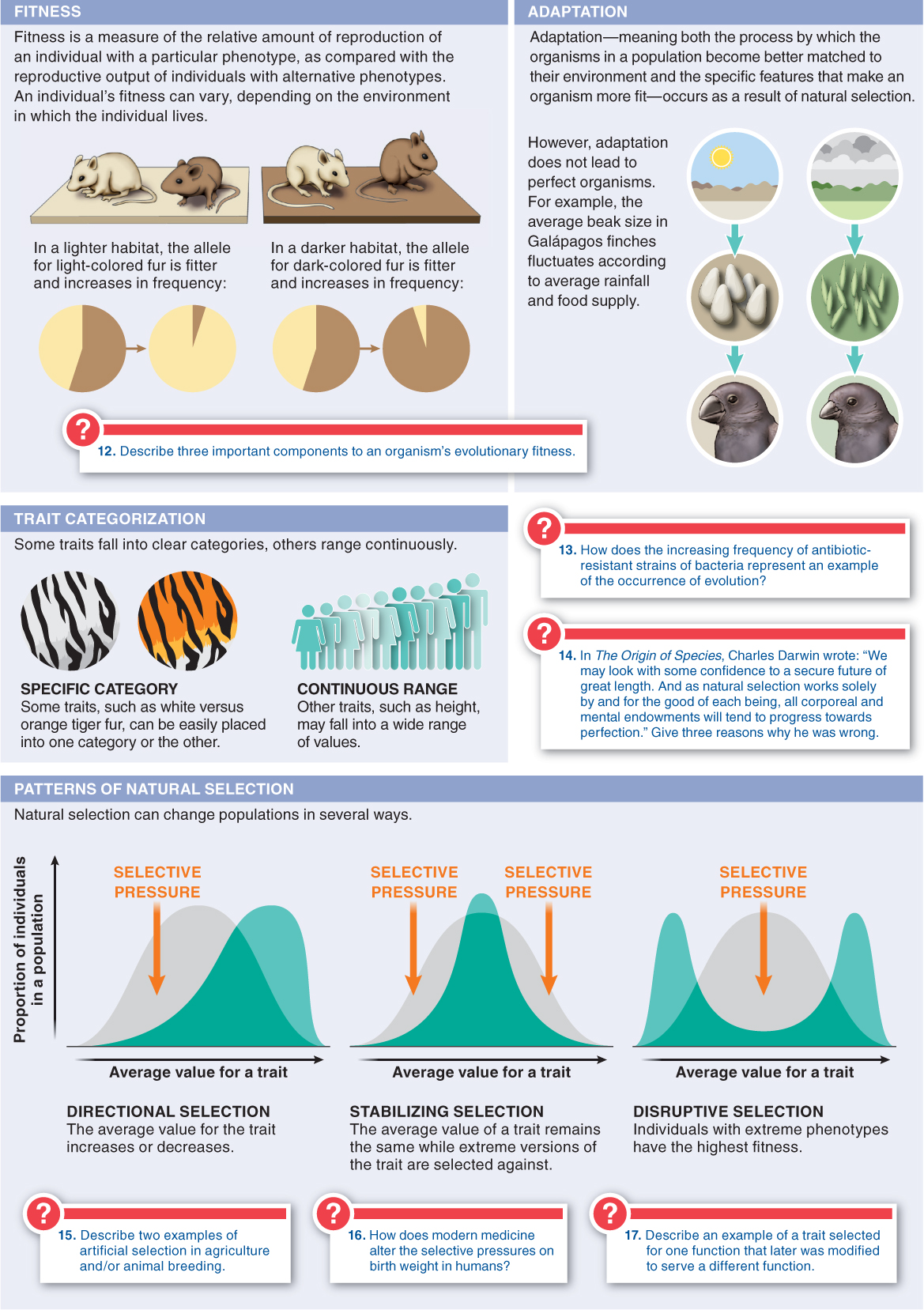8.11–8.17
8.11–Through natural selection, populations of organisms can become adapted to their environments.
When there is variation for a trait, and the variation is heritable, and there is differential reproductive success based on that trait, evolution by natural selection is occurring.

363
Q
Maze-
- a) is too complex a trait to be influenced by natural selection.
- b) is a heritable trait.
- c) is not influenced by natural selection, because it does not occur in rats’ natural environment.
- d) shows no variation.
- e) is influenced primarily by mutation.

A fossil is defined most broadly as:
- a) the preserved pieces of hard parts (e.g., shell) of extinct animals.
- b) any preserved remnant or trace of an organism from the past.
- c) the preserved bones of vertebrates.
- d) a piece of an organism that has turned into rock.
- e) the product of preservation of intact animal bodies.

Which of the following statements about marsupials is correct?
- a) They fill many niches in Australia that are occupied by placental mammals elsewhere.
- b) They are less fit than placental mammals.
- c) They have become extinct as a result of the greater fitness of placental mammals.
- d) They are more closely related to each other than to placental mammals.
- e) Both a) and d) are correct.

What can be concluded from comparing differences in molecular biology between different species?
- a) Extremely different species are fundamentally unrelated in any way.
- b) Only DNA sequences can be used to compare species’ relatedness.
- c) Birds are more closely related to humans than dogs are.
- d) Genetic similarities and differences demonstrate species relatedness.
- e) The longer two species have been evolving on their separate paths, the fewer the genetic differences between them.

Evolution:
- a) occurs too slowly to be observed.
- b) can occur in the wild but not in the laboratory.
- c) is responsible for the increased occurrence of antibiotic-
resistant bacteria. - d) does not occur in human-
occupied habitats. - e) None of these statements are correct.
